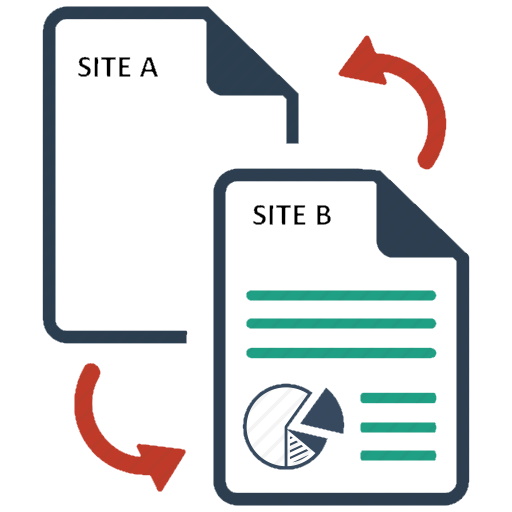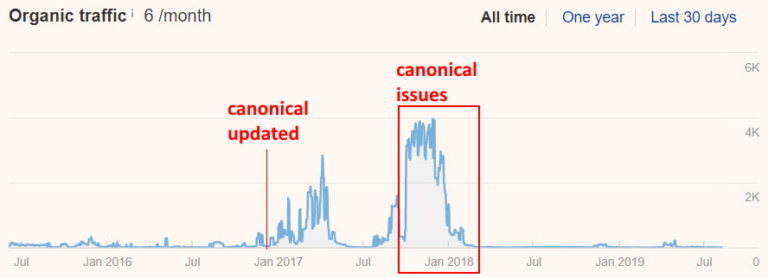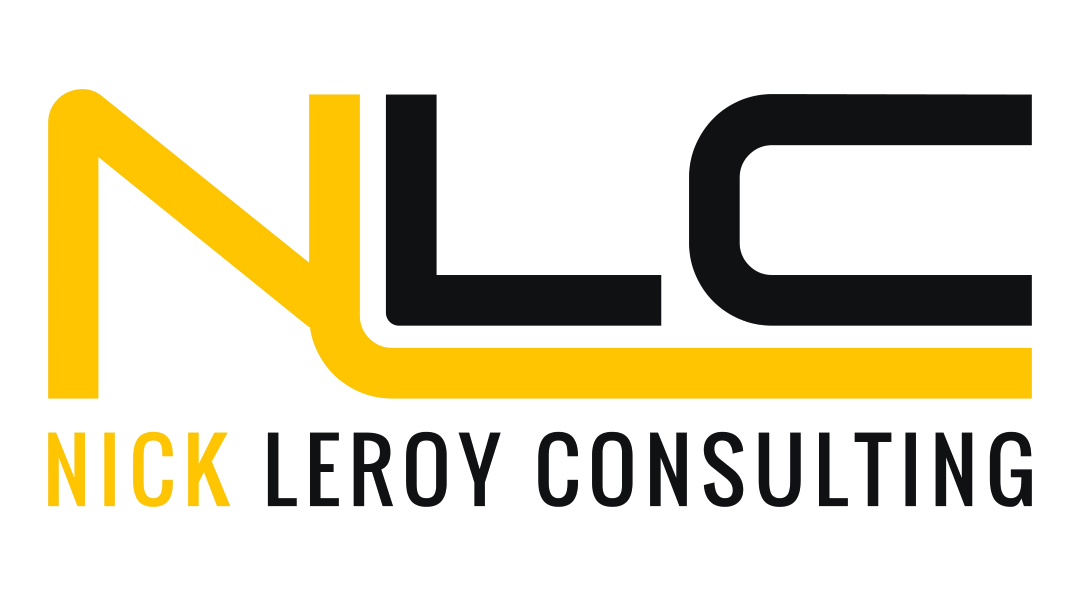Let’s start this post by acknowledging the obvious. In a perfect world, all websites owned by an entity would be consolidated into a single domain. However, in the real world, this simply isn’t feasible. Whether it be different brands or a completely different audience, many SEOs are challenged with accomplishing organic growth across multiple web properties.
I want to share a strategy I tested nearly two years ago that still provides a massive increase in organic traffic today. The best part of this case study is that it only highlights a single piece of content. If done correctly, this strategy can scale considerably. In full transparency, I ran this test across ~25 pieces of content to a different degree of success although nearly all of them provided a positive result.
Company History & Goals
This company does not sell products directly on their sites. They do, however, regularly post content to build visibility around their brand and to acquire email addresses. The email address then allows the client to interact with consumers and offer various coupons/offers to lift in-store purchases. Secondary to email acquisitions, monetization through ad impressions is another focus. This is where increases in organic traffic continues to double in its value to this company.
Two Websites, Two Audiences, Shared Content
In reviewing the content of each website and their performance I became very familiar with what content themes worked hardest for each site. Both of these sites were very similar topically but were built to attract two separate audiences. Think cars as the topic, but one site was built to attract muscle car fanatics and the other focusing on more green and eco-friendly enthusiasts. Despite different audiences, it’s easy to see how these two sites could have mutual content that could add value to both audiences. Think, oil changes, car washing tips, and even insurance shopping tips. Due to this mutual benefit, it wasn’t uncommon for select pieces of content to be hosted across 2 or more websites within this clients portfolio. Canonical tags were regularly put in place on any duplicate URLs to prevent SEO issues.
Content Relevancy Hypothesis
Over the years, Google has also shown significant ranking benefits to sites that are thematically relevant to the user’s search query. This, in my opinion, is why we regularly see content farms (sites that write about everything and anything with search volume) taking significant performance hits with each Google update. With that in mind, I wanted to test reassigning canonical ownership across content being hosted on two different websites.

Identifying Qualified Content
One benefit of running a portfolio of websites is the incredible amount of data you have at your disposal. Each one of these sites, despite being in the same industry, thrived in different areas. My goal was to identify content on site A that performed poorly but was the same theme of content that performed well on site B. Continuing with the example of cars, let’s envision a piece of content on the muscle car site discussing ways to increase your mileage and reduce your carbon emissions. While still relevant to high-performance muscle cars, MPG and emissions are much more of a focus on the eco-friendly car website.
Execution and Results
After identifying the content that I wanted to test I measured the performance of the content for the previous 12 months. My team would continue tracking the performance of the page on canonical receiving website for the following 12 months. Below is a screenshot of the URL on Site A followed by the URL on Site B. You’ll notice the canonical tags were updated around the first of the year back in 2017.
Note that in Dec ’17/Jan ’18 this client had a glitch with their canonical tags in which Google reverted a chunk of organic traffic back to site A (the original canonical owner).

Canonical tags change values around 1/17

Organic traffic increases substantially after the canonical tag value is updated
Interestingly enough, when the canonical tag values were first swapped we saw more growth in the original URL. I suspect that Google was starting to attribute the new sites relevancy signals but it hadn’t yet updated its index to reflect the new websites URL within the search results.
Did This Cause Future Performance Issues?
As you can see from the graph, organic performance started to dip with the dreaded 8/1 ‘medic’ update. I don’t believe this strategy contributed to the drop in performance. The 8/1 update impacted site-wide traffic which as result also impacted the URLs that this test covers. Despite not working on this site for a while I did poke around third-party tools to review their holistic organic performance. It’s safe to say that this site has yet to fully recover from the 8/1 core algorithm update. The site, however, has seen an uptick in organic traffic with each subsequent core algorithm update.
Own a Portfolio of Sites? Try This Test!
You should always be intentional with the content you create and where it gets published. However, if you’re like me, you’ve likely inherited a fair amount of content from past years. This test serves as just one test that you can replicate to influence organic performance when budget, time, and or resources don’t exist. You never know how Google will react and if you’re lucky you might just unlock a scalable growth strategy for your portfolio of sites. If you’ve run similar cross-domain (portfolio) SEO strategies, id love to hear more in the comments below.
Hero Image Credit: vecteezy.com
